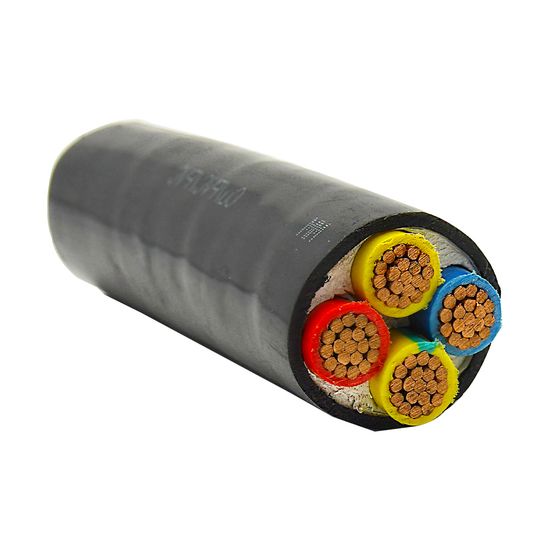What is the IEC Standard for PVC Insulated Cables?
Jan 10, 2025In the electrical industry, the safe and reliable operation of wiring systems depends on the quality and compliance of cables used in various installations. PVC (Polyvinyl Chloride) insulated cables are one of the most widely used types of cables in both residential and industrial applications. The IEC (International Electrotechnical Commission) standards for PVC insulated cables provide essential guidelines for manufacturers to ensure that the cables meet specific safety, performance, and quality criteria. These standards play a crucial role in maintaining the global consistency of electrical installations, guaranteeing that cables are safe and effective for their intended use.
The IEC standard for PVC insulated cables is a set of internationally recognized rules that define the construction, performance, testing, and safety requirements for cables with PVC insulation. The standards aim to ensure that cables perform effectively under a range of conditions, including temperature fluctuations, mechanical stress, and exposure to various environmental factors. These standards cover a wide range of cable types, including power cables, control cables, and signal cables.
One of the primary IEC standards related to PVC insulated cables is IEC 60227. This standard specifically applies to cables with thermoplastic PVC insulation. IEC 60227 outlines the requirements for cables used in power and control circuits, including both single-core and multi-core cables.
The IEC 60227 standard is divided into multiple parts, each focusing on different aspects of cable construction and performance. Some of the key areas covered by IEC 60227 include:
Construction Requirements: The standard defines the basic construction specifications for PVC insulated cables, including the type of insulation, conductor materials, and sheathing. It outlines the requirements for the insulation thickness, which ensures the safe operation of the cables under various electrical loads and environmental conditions.
Mechanical and Physical Properties: IEC 60227 specifies the mechanical strength requirements for PVC cables. This includes testing for the ability of cables to withstand physical stresses such as tensile strength, flexibility, and resistance to abrasion. These properties ensure the durability and longevity of PVC cables in both indoor and outdoor installations.
Thermal Performance: The standard also defines the temperature range in which PVC insulated cables are expected to perform reliably. Typically, PVC insulated cables can operate within a temperature range of -15°C to +70°C, with specific ratings depending on the type of cable and its application.
Electrical Performance: The IEC 60227 standard specifies the electrical properties of PVC insulated cables, including insulation resistance, dielectric strength, and current-carrying capacity. These parameters ensure that the cables are safe for use in various electrical systems without causing energy loss or short circuits.
Fire Safety: One of the key safety features outlined in IEC 60227 is the requirement for cables to be fire-resistant. PVC cables are known for their self-extinguishing properties, and the standard specifies the flame-retardant characteristics that ensure the cables do not contribute to the spread of fire in the event of an electrical fault.
Marking and Identification: The standard also includes guidelines for marking PVC cables to ensure that they are easily identifiable. This includes clear labeling of cable ratings, such as voltage rating, conductor material, and manufacturer details.
Another important standard for PVC cables is IEC 60332, which specifically addresses the fire performance of cables. This standard outlines the testing procedures and requirements for cables used in scenarios where fire resistance is critical. IEC 60332 classifies cables into different categories based on their ability to withstand fire and minimize the spread of flames. This standard is particularly important for PVC cables used in public spaces, high-rise buildings, or industrial facilities where fire safety is a priority.
For certain applications, especially those in sensitive environments like hospitals or underground infrastructures, IEC 60754 is a relevant standard for PVC cables. This standard addresses the requirements for cables that produce low smoke and do not release toxic gases when exposed to fire. Though not all PVC cables are subject to this standard, it is essential for specific industries where fire safety and air quality during a fire are critical.
Compliance with IEC standards ensures that PVC insulated cables meet internationally recognized criteria for safety, performance, and reliability. Using cables that are compliant with IEC standards reduces the risk of electrical hazards, equipment failure, and costly downtime. It also ensures that the cables meet regulatory requirements, which is crucial for industries where safety and quality are paramount.
For industries such as construction, power generation, manufacturing, and telecommunications, choosing cables that adhere to IEC standards guarantees that the installation is both safe and reliable. Furthermore, IEC-compliant PVC cables often come with third-party certifications, which can help build confidence in their performance and ensure they meet local and international safety codes.
At DYSen, we provide high-quality PVC insulated and sheathed cables that comply with IEC standards, ensuring that your electrical systems are safe and efficient. Our 3-core XLPE insulated PVC sheathed power cables are designed to meet the stringent requirements of international standards, providing durability, flexibility, and fire resistance for industrial and commercial applications.
Visit our product page at PVC Insulated and Sheathed Power Cables to learn more about our IEC-compliant cables and how we can help you achieve the highest standards of electrical safety and performance.

IEC standards for PVC insulated cables play an essential role in ensuring the safety, reliability, and efficiency of electrical systems. By adhering to standards such as IEC 60227, IEC 60332, and IEC 60754, manufacturers and businesses can guarantee that their PVC cables meet the required performance, fire resistance, and environmental conditions. For industries seeking reliable, high-quality cables, DYSen provides IEC-compliant PVC insulated cables that are designed to meet global standards.